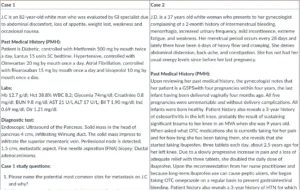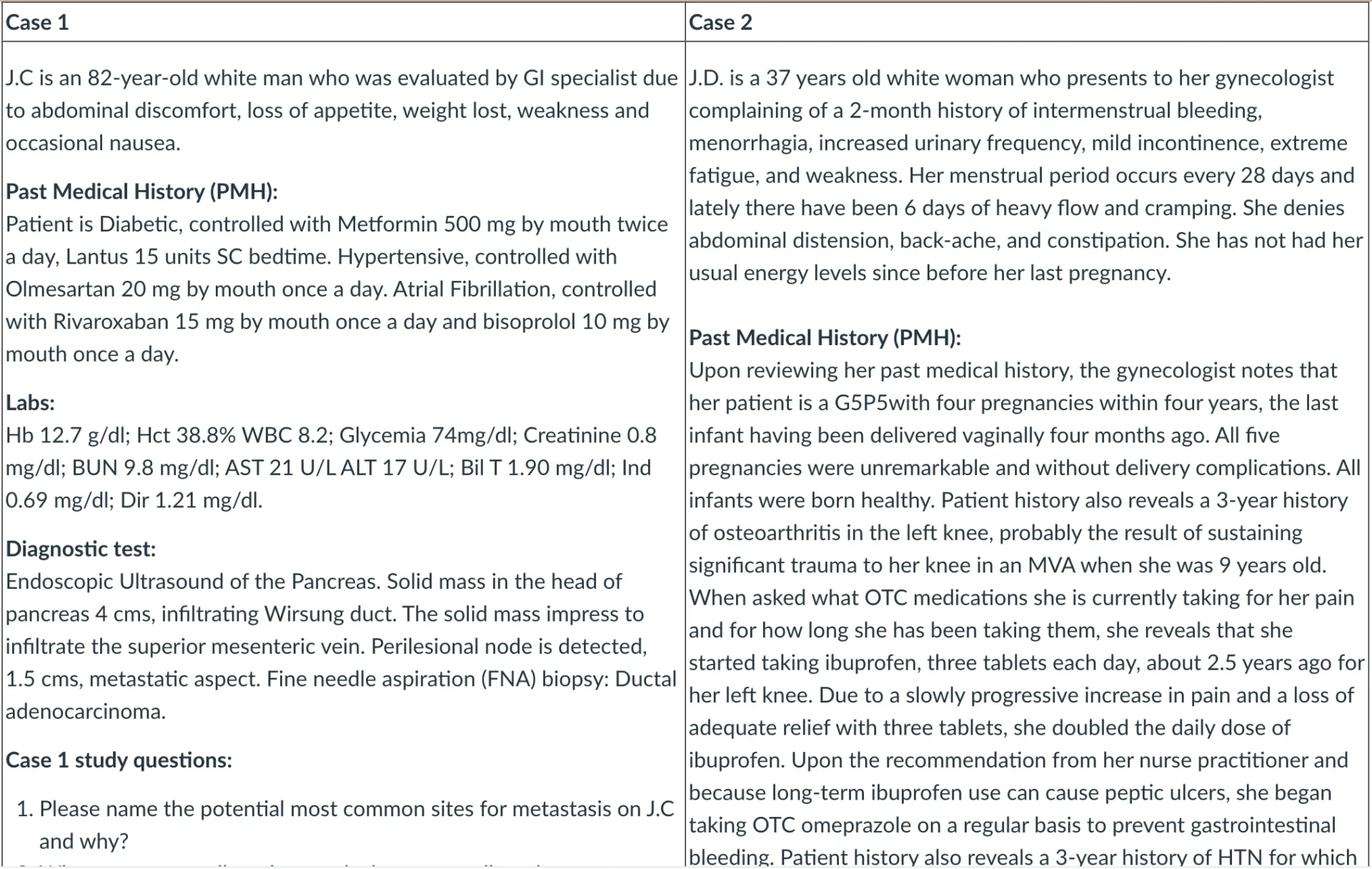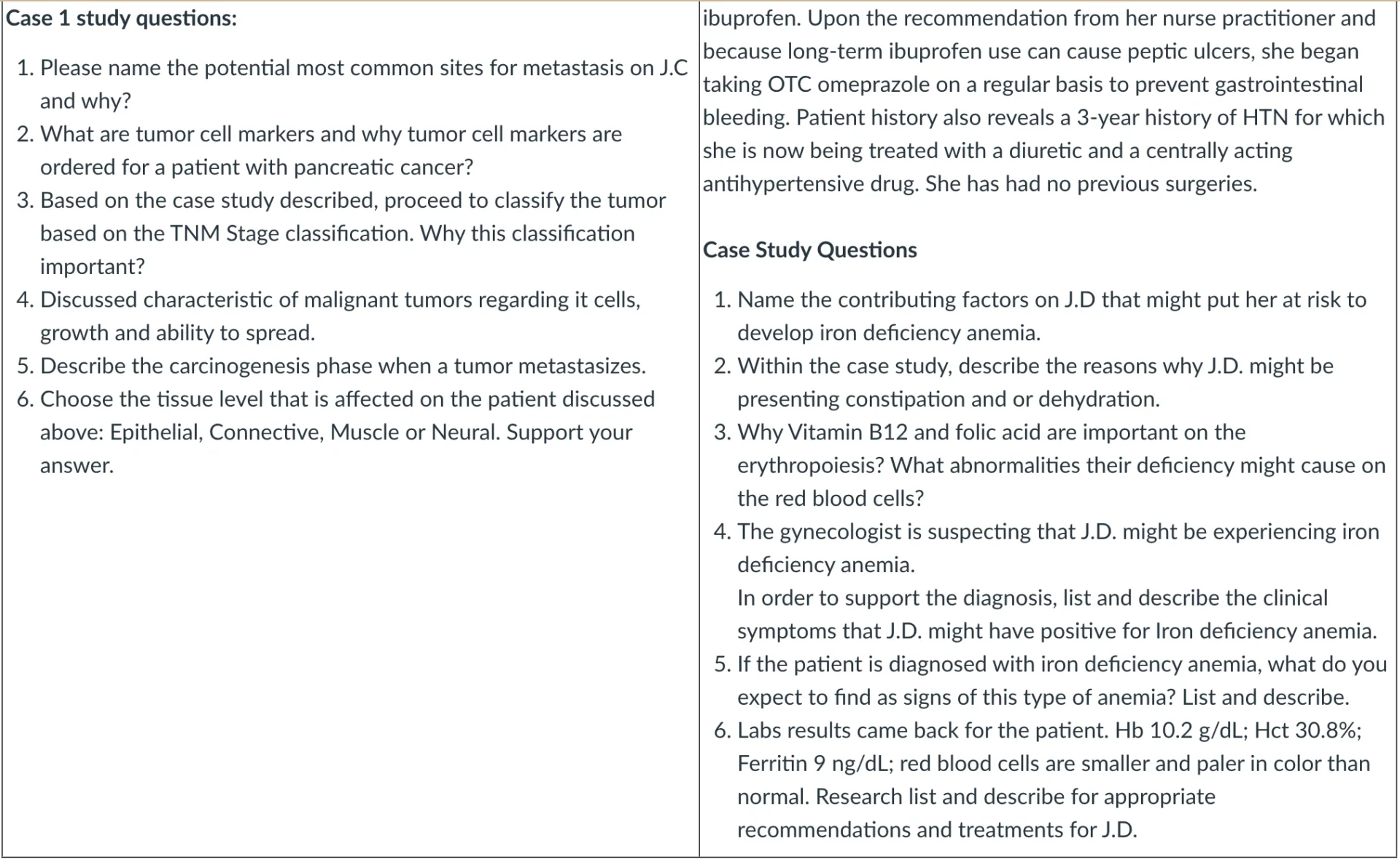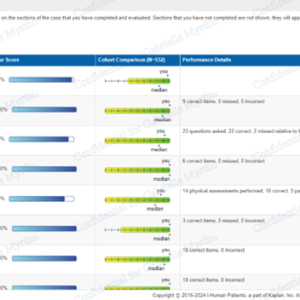NUR-502 Module 1 Discussion

![]() Discussion 1
Discussion 1

Students with the last name A-M respond to Case 1 for your initial post and Case 2 for your peer responses. Students whose last name is N-Z, respond to Case 2 for your initial post and Case 1 for your peer responses. Indicate which case you are responding to at the top of your post.
| Case 1 | Case 2 |
| J.C is an 82-year-old white man who was evaluated by GI specialist due to abdominal discomfort, loss of appetite, weight lost, weakness and occasional nausea.
Past Medical History (PMH): Labs: Diagnostic test: Case 1 study questions:
|
J.D. is a 37 years old white woman who presents to her gynecologist complaining of a 2-month history of intermenstrual bleeding, menorrhagia, increased urinary frequency, mild incontinence, extreme fatigue, and weakness. Her menstrual period occurs every 28 days and lately there have been 6 days of heavy flow and cramping. She denies abdominal distension, back-ache, and constipation. She has not had her usual energy levels since before her last pregnancy.
Past Medical History (PMH): Case Study Questions
|
Submission Instructions:
- Your initial post should be at least 500 words, formatted and cited in current APA style with support from at least 2 academic sources. Your initial post is worth 8 points.
- You should respond to at least two of your peers by extending, refuting/correcting, or adding additional nuance to their posts. Your reply posts are worth 2 points (1 point per response.)
- All replies must be constructive and use literature where possible.
- Please post your initial response by 11:59 PM ET Thursday, and comment on the posts of two classmates by 11:59 PM ET Sunday.
- You can expect feedback from the instructor within 48 to 72 hours from the Sunday due date.
SOLUTION
Pancreatic ductal adenocarcinoma is notorious for spreading early, most commonly to the liver, lungs, peritoneum, and regional lymph nodes. In J.C.’s case, imaging revealed a mass infiltrating the superior mesenteric vein and a nearby lymph node showing signs of metastasis. These findings strongly suggest early lymphatic and vascular dissemination, which is characteristic of this malignancy. The liver is a frequent site for metastasis due to the pancreas’s venous drainage into the portal system, making it vulnerable to circulating tumor cells (American Cancer Society, 2023). Such a pattern underscores the aggressive nature of pancreatic cancer and the importance of evaluating systemic spread during initial staging (Kamisawa et al., 2016).
Tumor markers are measurable substances found in the blood or tissue that may indicate the presence of cancer. For pancreatic cancer, CA 19-9 is the most frequently used marker, with CEA also sometimes tested. These biomarkers are not definitive for diagnosing cancer but are………………….please add to cart and check out to purchase the entire discussion post at $10 only








Reviews
There are no reviews yet.